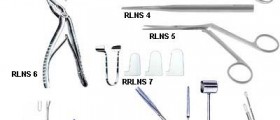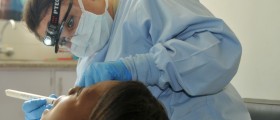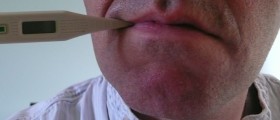
Acute frontal sinusitis is an inflammation of the lining of the frontal sinus. Frontal sinus is much less prone to infections and inflammations compared to maxillary sinuses. This form of sinusitis makes up for four percent of all cases of acute sinusitis and it is more common in teenage boys and young male adults.
Acute frontal sinusitis is considered to be a more serious form of sinusitis because it has a higher risk of complications, such as intracranial infection. For this reason, surgery is often performed for this infection, especially if there is no response to medical treatment.
The symptoms of acute frontal sinusitis are similar to the symptoms of maxillary sinusitis, however the pain and the pressure are concentrated mainly on the area of frontal sinuses, which is the forehead. Aside from feeling of pressure, tenderness, stuffiness and headache, the symptoms usually include nasal discharge, fever and impairment or loss of the sense of smell.
Causes of acute frontal sinusitis
Frontal sinusitis is often associated with the obstruction of ethmoid air cells, because ethmoid and frontal sinuses are anatomically close to each other. The obstruction may result from trauma, polyps, tumors, deviation of the septum or acute infections. Acute frontal sinusitis often develops after seasonal viral infections of the upper respiratory tract, such as flu or common cold.
Obstruction impedes normal evacuation of the mucus from the sinuses, the mucus remains trapped inside and becomes a breeding ground for various pathogens.
Complications of acute frontal sinusitis
Complications resulting from acute frontal sinusitis can be of intracranial or ocular type. Intracranial complications may involve meningitis, abscess of the brain, epidural, subdural and cerebral epyema. Meningitis is one of the most important complications of acute frontal sinusitis. The signs and symptoms of meningitis include fever, neck pain and stiffness, photosensitivity, severe headache and altered mental status.
Ocular complications can include orbital cellulitis, preseptal cellulitis, subperiosteal abscess and cavernous sinus thrombosis.
Treatment for acute frontal sinusitis
Upon diagnosing acute frontal sinusitis most doctors will first try an aggressive course of broad-spectrum antibiotics. If the sinusitis does not respond soon to antibiotics, the surgery may be necessary. Mucolytic agents, decongestants and sometimes antihistamines can also be administered. If there is no improvement in three to five days and if the risk of complications is estimated as high, the surgery is indicated.
Surgery is not recommended in case there is a history of keloid development, hypoplastic sinuses, osteomyelitis, Pott puffy tumors and certain structural or anatomical abnormalities.

















Your thoughts on this
Loading...